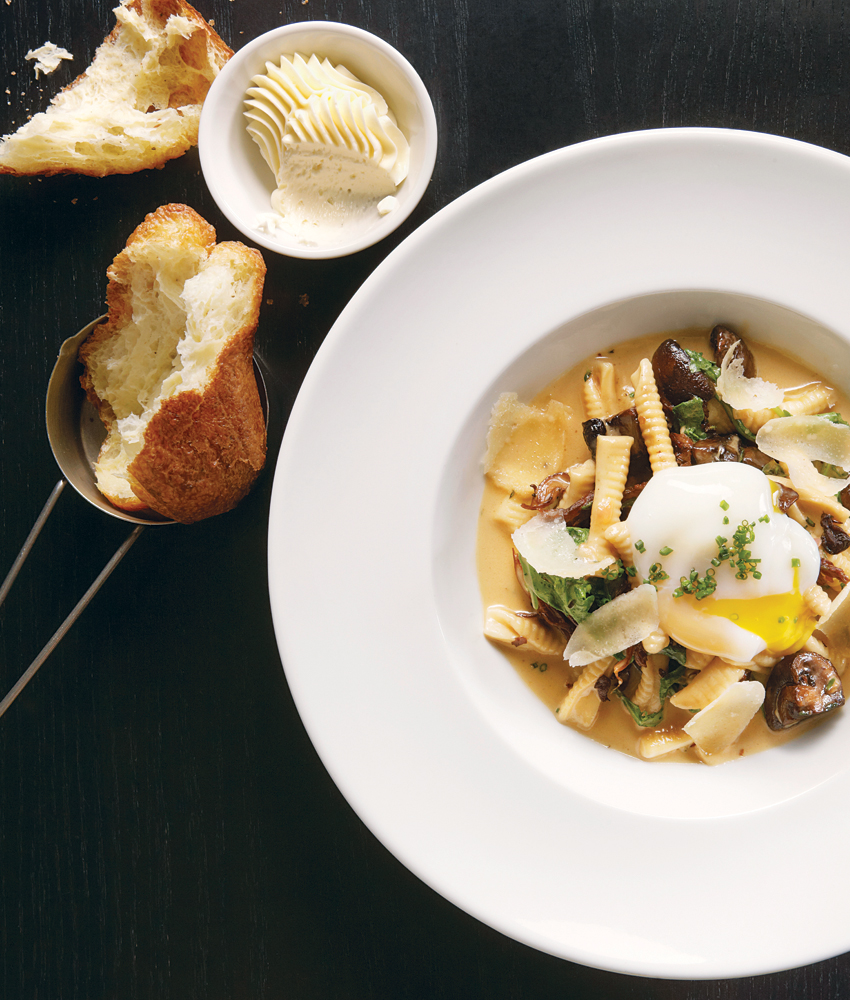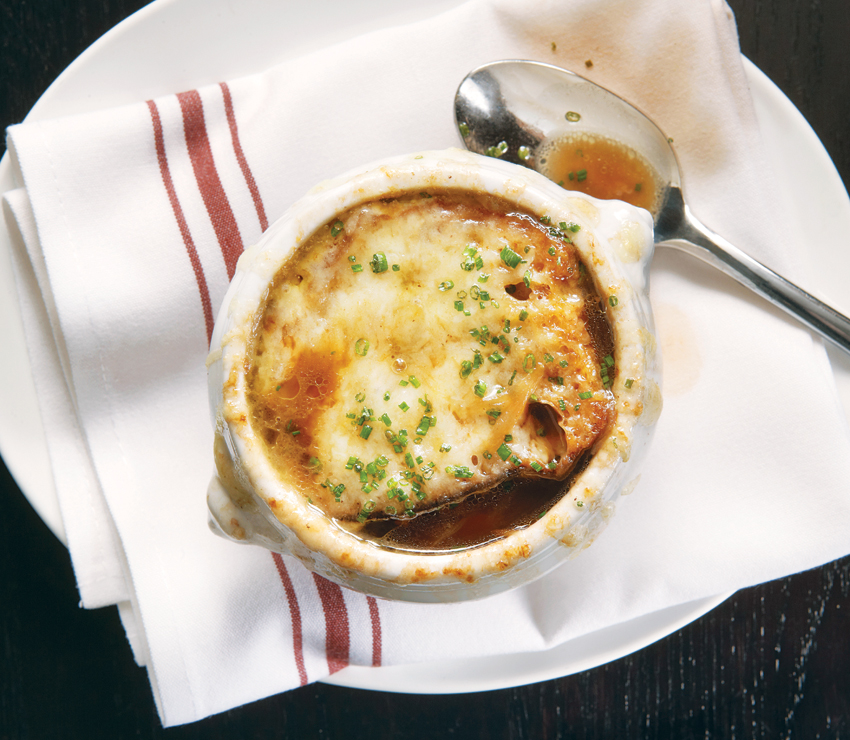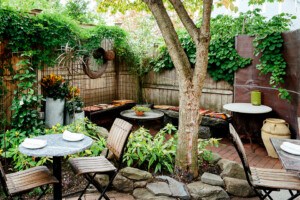Restaurant Review: Boston Chops in the South End

Some of the best dishes at Boston Chops—like the wild-mushroom cavatelli ($26)—are actually meat-free. (Photographs by Nina Gallant)
I walked into Boston Chops, the self-titled “urban steak bistro” in the former Banq/Ginger Park space, with an admitted chip on my shoulder—a birch-plywood chip. I couldn’t help but mourn the loss of the most distinctive interior of any Boston restaurant in two or three decades: No one who dined among the Nordic stalactites will forget it. But maybe Boston Chops’ dark, medieval-banquet-hall-in-Vegas décor will succeed where Banq and Ginger Park failed—failed, I’d argue, because their well-priced, often wonderful Singaporean and Thai street food was too unusual for such a big space, and that spellbinding design didn’t give the slightest hint of what kind of cuisine you might be in for.
The ambiance at Boston Chops, on the other hand, says meat. Whereas the Met Club and Morton’s aim for bland businessman’s lounge, and Smith & Wollensky and Grill 23 for Gilded Age extravagance, Boston Chops is more urban, with its exposed brick and wrought-iron bars on the newly uncovered high windows. It’s also deliberately masculine—think dark tufted-leather banquettes and dark wooden tables without tablecloths. The location, however, is an odd choice for a big steakhouse—an upscale, self-consciously hip neighborhood doesn’t seem like the first place you’d go to close the deal over a fat-marbled rib-eye and an icy martini.
Co-owners Brian Piccini and Chris Coombs (who also runs the kitchen )—the team behind the successful Dbar, in Dorchester, and Deuxave, in the Back Bay—say that they saw a business opportunity for a steakhouse in an area that lacked one. Perhaps they were looking to attract the kinds of sleek crowds that have made the nearby restaurants Gaslight and Cinquecento such loud successes. After my three meals at Boston Chops, however, it was tough to pinpoint exactly who the restaurant will appeal to. One night the customers seemed like suburbanites, prosperous and unflashy; another night, the noisy, beer-swilling businessmen you’d see at Grill 23; another night, the fastidiously dressed, mostly gay South Enders who have been the neighborhood’s bread and butter.

Bone-in tenderloin entrée, $39
It’s also tough to pinpoint what will be coming out of the kitchen—because it isn’t consistent, particularly when it comes to beef, the supposed star of the show. The steak portion of the menu is divided into à la carte cuts, composed entrées, and variations of steak frites. First tip: Try the bone-in cuts, which usually have better flavor and certainly did here. The single best piece of meat I had was the 10-ounce bone-in tenderloin ($39), so juicy, tender, and full of beef flavor that I had to start gnawing on the bone before I finished the meat. Though it had a nicely black exterior, there was no crust: Coombs believes the main sin of steakhouses is burning everything under the guise of char, and as a result all of his cuts are pan-roasted or grilled over gas. The tenderloin was a trip to steak heaven.
So was the prime grilled flat-iron steak frites ($24). This had been a shot in the dark, as two servers had declared the best steak frites option to be the rib-eye roll steak. A neatly sliced low rectangle of medium-rare meat, the flat-iron was everything sliced beef should be—not beautifully tender, perhaps, but beautifully full of flavor.
Go beyond the flat-iron steak and the bone-in tenderloin, though, and things get dicier. The hanger steak frites ($25) was tough, sliced too thick, and had hardly any flavor at all. And that rib-eye roll steak? It was unexpectedly tender when cooked medium, but a very dull piece of beef for $29.

French onion soup, $11


